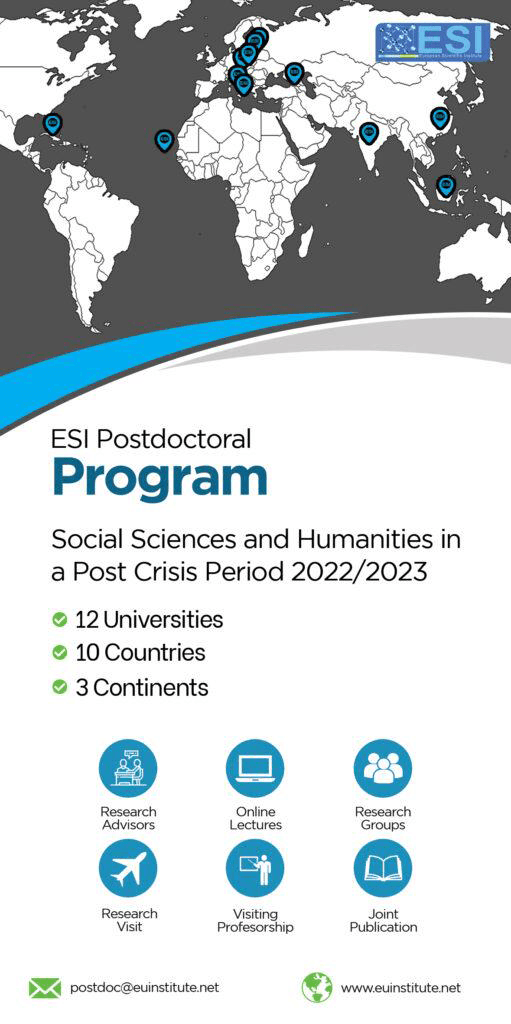The Role of Family and Culture on Young Women’s Perceptions of Motherhood: A Comparative Study of Sri Lankan and Indian Female College Students
Abstract
Fertility rates in South Asia have declined significantly over the past four decades, with Sri Lanka and India leading this demographic transition. Addressing this problem, the study focuses on two key objectives: first, to explore cultural differences in the socialization process in Sri Lanka and India, particularly concerning the reinforcement of motherhood; and second, to examine culture-specific parenting practices that shape young women’s decision-making about marriage and motherhood. To achieve this, the research investigates how the socialization process of young, unmarried female undergraduates in these two countries influences their perceptions of motherhood and the declining fertility rate in contemporary times. Using a mixed-method and pseudo-longitudinal design, data were collected from over 500 students at the University of Colombo in Sri Lanka and the VET Institute of Arts and Science in Tamil Nadu, India, covering diverse academic disciplines, years of study, and socio-economic backgrounds. The findings indicate that while traditional ideals of motherhood remain deeply rooted, young women are renegotiating these roles through education, career aspirations, and exposure to global norms, though in varying ways across the two contexts. Indian students display greater confidence in balancing motherhood and career, while Sri Lankan students confront stronger patriarchal pressures and weaker institutional support. These results highlight the complex interplay of culture, family, and modern aspirations, contributing to the understanding of ongoing demographic shifts in Sri Lanka and India and offering policy-relevant insights into gender, education, and reproductive decision-making.
Downloads
Metrics
PlumX Statistics
References
2. Bongaarts, J. (2017). Africa’s unique fertility transition. Population and Development Review, 43(S1), 39–58. Retrieved August 15, 2025, from https://doi.org/10.1111/padr.12058
3. Bourdieu, P. (1984). Distinction: A social critique of the judgement of taste. Harvard University Press.
4. Crenshaw, K. (1989). Demarginalizing the intersection of race and sex: A Black feminist critique of antidiscrimination doctrine, feminist theory, and antiracist politics. University of Chicago Legal Forum, 1989(1), 139–167.
5. Dasgupta, S., & Sharma, S. (2019). Changing perceptions of motherhood among urban Indian women. Journal of Family Issues, 40(15), 2203–2225. Retrieved August 14, 2025, from https://doi.org/10.1177/0192513X19856789
6. De Alwis, M. (2002). Nationalism, gender, and motherhood in Sri Lanka. Asian Journal of Social Science, 30(2), 233–257. Retrieved August 13, 2025, from https://doi.org/10.1163/156853102320159450
7. Desai, S., & Andrist, L. (2010). Gender scripts and age at marriage in India. Demography, 47(3), 667–687. Retrieved August 15, 2025, from https://doi.org/10.1353/dem.0.0118
8. Dube, L. (2001). Women and kinship: Comparative perspectives on gender in South and South-East Asia. Sage Publications.
9. Elder, G. H., Jr. (1994). Time, human agency, and social change: Perspectives on the life course. Social Psychology Quarterly, 57(1), 4–15. Retrieved August 15, 2025, from https://doi.org/10.2307/2786971
10. Gergen, K. J. (1985). The social constructionist movement in modern psychology. American Psychologist, 40(3), 266–275. Retrieved August 14, 2025, from https://doi.org/10.1037/0003-066X.40.3.266
11. Ginsburg, F. D., & Rapp, R. (1995). Conceiving the new world order: The global politics of reproduction. University of California Press.
12. Herath, H. M. P. (2015). Gender roles and fertility in contemporary Sri Lanka: A socio-cultural perspective. South Asian Journal of Social Studies, 12(1), 45–63.
13. Inglehart, R., & Baker, W. E. (2000). Modernization, cultural change, and the persistence of traditional values. American Sociological Review, 65(1), 19–51. https://doi.org/10.2307/2657288
14. Jayaraman, R., Mishra, V., & Arnold, F. (2009). Education and fertility decline in India. Population Research and Policy Review, 28(3), 259–285. Retrieved August 15, 2025, from https://doi.org/10.1007/s11113-008-9105-3
15. Jeffery, R., & Jeffery, P. (2006). Gender, caste, and religious identity: Continuities and changes in India. Routledge.
16. Kabeer, N. (2005). Gender equality and women’s empowerment: A critical analysis of the third millennium development goal 1. Gender & Development, 13(1), 13–24. Retrieved August 14, 2025, from https://doi.org/10.1080/13552070512331332273
17. Kandiyoti, D. (1988). Bargaining with patriarchy. Gender & Society, 2(3), 274–290. Retrieved August 13, 2025, from https://doi.org/10.1177/089124388002003004
18. Lesthaeghe, R. (2010). The unfolding story of the second demographic transition. Population and Development Review, 36(2), 211–251. Retrieved August 15, 2025, from https://doi.org/10.1111/j.1728-4457.2010.00328.x
19. McDonald, P. (2000). Gender equity in theories of fertility transition. Population and Development Review, 26(3), 427–439. Retrieved August 14, 2025, from https://doi.org/10.1111/j.1728-4457.2000.00427.x
20. Mezirow, J. (1991). Transformative dimensions of adult learning. Jossey-Bass.
21. Obeyesekere, R. (1990). The work of culture: Symbolic transformation in psychoanalysis and anthropology. University of Chicago Press.
22. Perera, R. (2018). Negotiating motherhood in urban Sri Lanka: Between tradition and modernity. Asian Journal of Women’s Studies, 24(4), 456–475. Retrieved August 14, 2025, from https://doi.org/10.1080/12259276.2018.1543210
23. Rich, A. (1976). Of woman born: Motherhood as experience and institution. W. W. Norton & Company.
24. Stacey, J. (1996). In the name of the family: Rethinking family values in the postmodern age. Beacon Press.
25. Tronto, J. (1993). Moral boundaries: A political argument for an ethic of care. Routledge.
26. Uberoi, P. (2006). Freedom and destiny: Gender, family, and popular culture in India. Oxford University Press.
27. UNFPA. (2023). Youth and reproductive health in South Asia: Trends and perspectives. United Nations Population Fund. Retrieved August 13, 2025, from https://www.unfpa.org
28. World Bank. (2022). Fertility rate, total (births per woman) – India, Sri Lanka. World Bank Data. Retrieved August 13, 2025, from https://data.worldbank.org/indicator/SP.DYN.TFRT.IN
Copyright (c) 2025 L. Kosala, J.T.U. Jayathunga, Iresha Lakshman, Yasir Ashraf

This work is licensed under a Creative Commons Attribution 4.0 International License.








